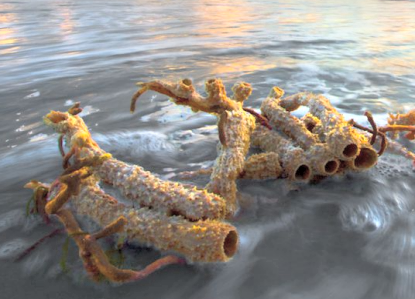
Callyspongia vaginalis
Tube sponges can grow to 3 feet tall. Yellow tube sponges have the shape of a long, hollow tube and can be as long as 3 feet. In shallow water they are bright yellow, while deeper-water tube sponges are darker in color. When a yellow tube sponge is exposed to air, it begins to turn purple and then black.
The most abundant sponges in Southwest Florida waters are loggerhead sponges, vase sponges, sheepswool sponges, glove sponges and tube sponges.
Most sponges are hermaphroditic — able to act as either female or male. They can reproduce both sexually or asexually. Sexual reproduction happens internally. The male cells release sperm into the surrounding water. These are taken in by the female cells and are carried by special amoeba-like cells to the eggs for fertilization. Tiny larvae develop and are released into the water. They have cillia that propel them to a new location. The larvae then settle to the sea floor to grow.
Asexual reproduction occurs when fragments of a sponge break off and drop to the seafloor or are scattered by water currents. These pieces attach themselves to hard objects and grow into mature sponges, thereby increasing the population.
Sponge harvesters have learned that cutting sponges off with a knife rather than ripping the sponge from its attachment allows the remains of the cut sponge to grow again.
Live shells should never be taken from any Florida State Park.